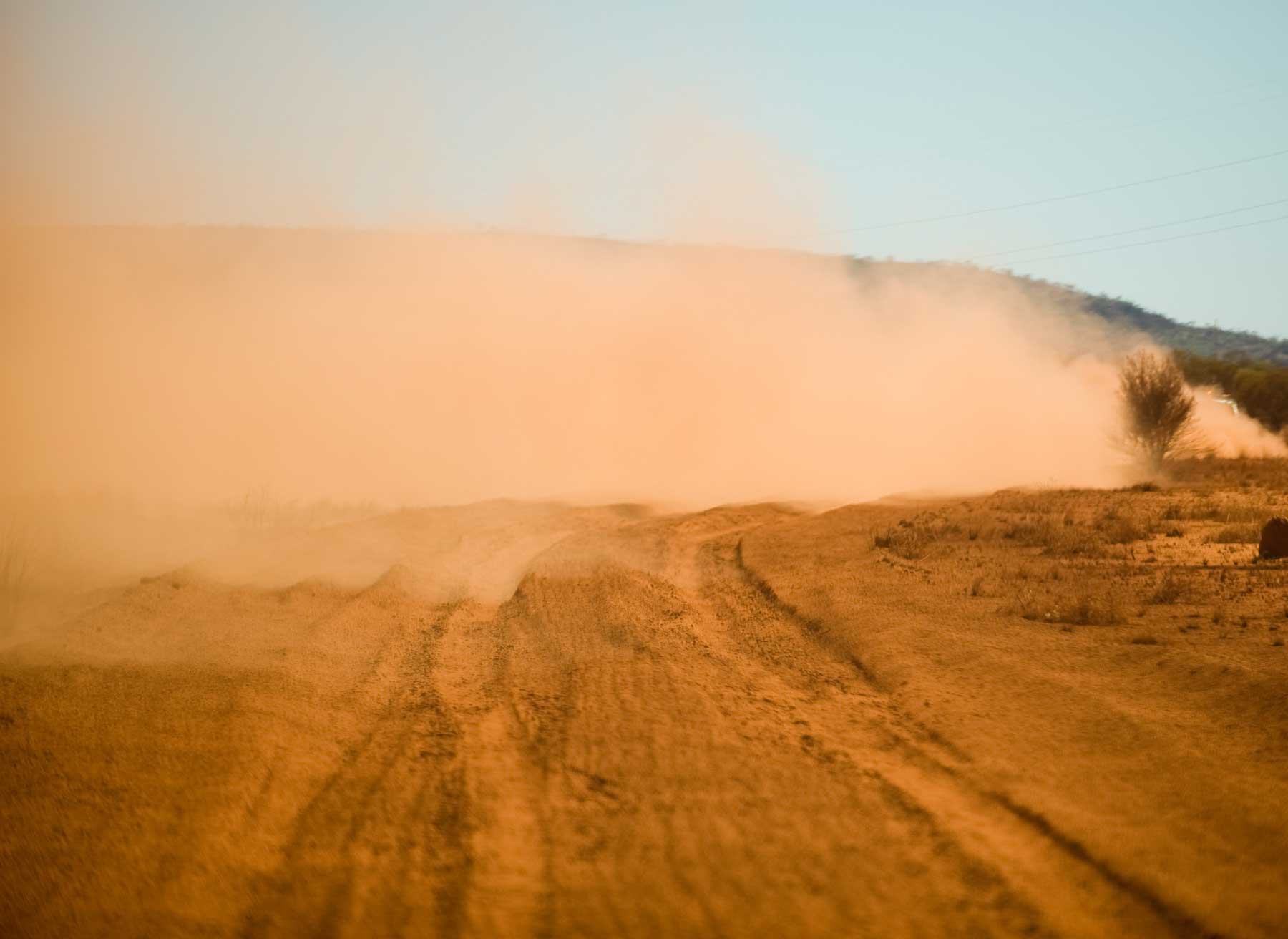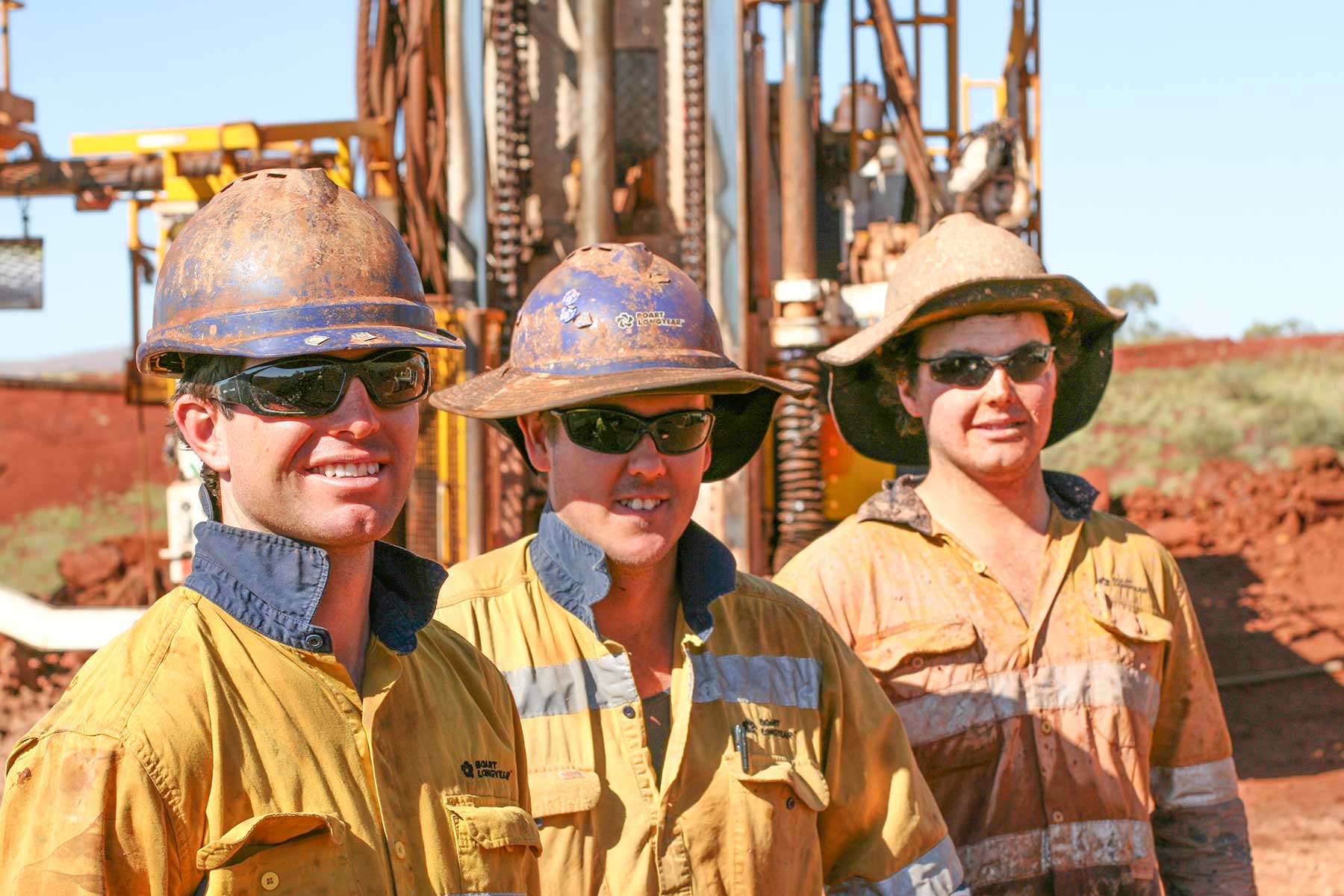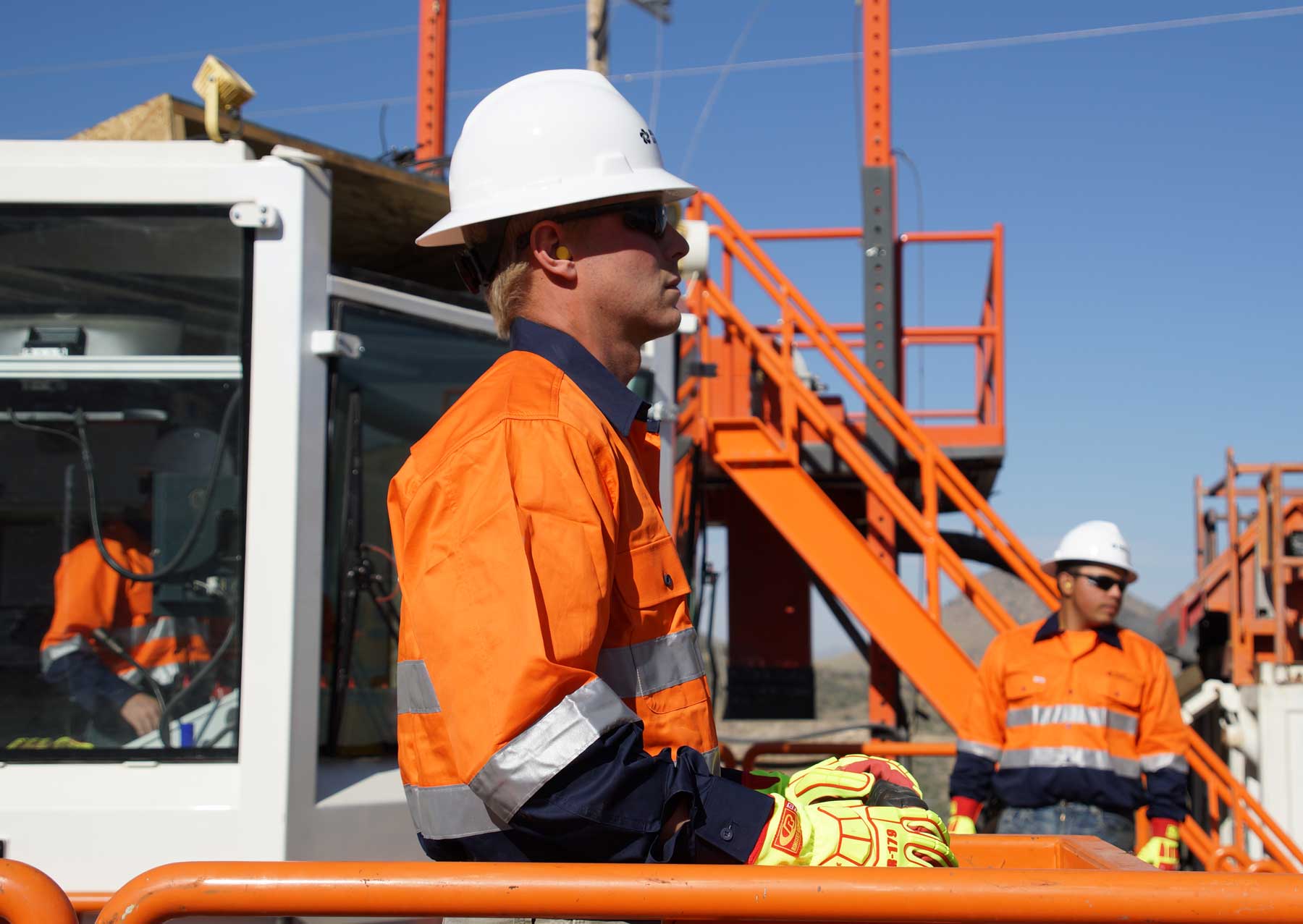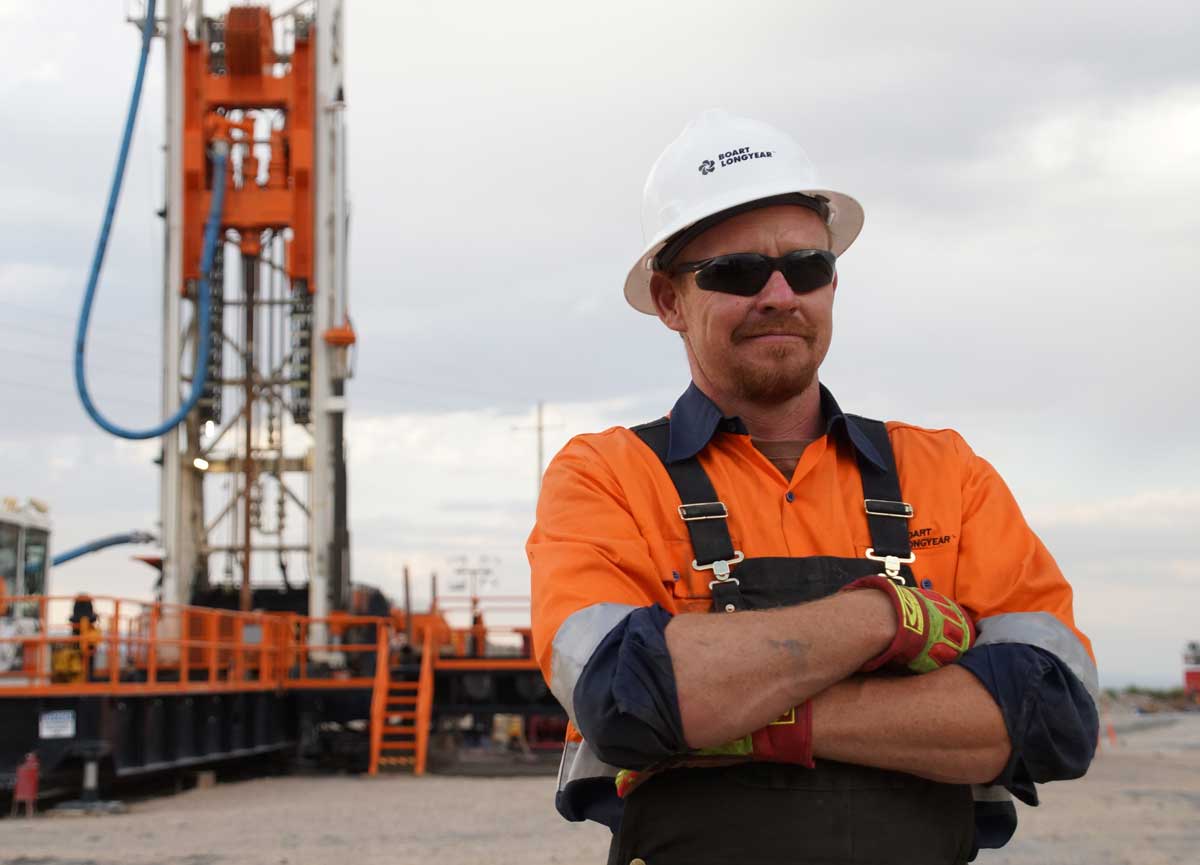CONSEJOS PARA EL TRABAJO EN TERRENO
junio 25, 2019
El éxito del proyecto de perforación: siete consejos para una comunicación efectiva
Considere los últimos cincuenta años y todas las formas en que las personas se comunican. Las nuevas tecnologías, los sistemas y las metodologías han cambiado el curso de la historia. Sin embargo, un factor sigue siendo el mismo y ha sido la clave fundamental para el éxito: la comunicación efectiva. Mirando los próximos cincuenta años, el futuro de los proyectos de perforación de exploración sólo tendrá éxito si se logra una colaboración eficiente en el lugar de trabajo.
Por ejemplo, piense en el primer proyecto de perforación de exploración que podría tener lugar en Marte.
Por ejemplo, piense en el primer proyecto de perforación de exploración que podría tener lugar en Marte. Las nuevas variables, como la falta de oxígeno, los viajes espaciales y los climas extremos crean un entorno de trabajo difícil y condiciones desconocidas. Pero al final del día, lo más importante es la capacidad que tengan los equipos de perforadores para comunicarse de manera efectiva entre sí durante la duración del proyecto.

Independientemente del lugar o el mundo donde se ubique un proyecto de perforación, el éxito comienza y termina con la comunicación.
Independientemente del lugar o el mundo donde se ubique un proyecto de perforación, el éxito comienza y termina con la comunicación.
Considere los proyectos que ha realizado ... ¿cómo afectó la comunicación al resultado?
Debido a que interactuamos y nos relacionamos con personas todos los días, la comunicación a menudo se puede pasar por alto como un factor esencial del éxito. Aquí hay siete consejos para logar una comunicación efectiva que ayude a mantener su equipo de trabajo coordinado y contenido y, finalmente, superar las metas y objetivos del proyecto.
Comunicación en el sitio
1. Asegúrese de que todos los miembros del equipo de perforación entiendan la cadena de comunicación.

La comunicación del equipo de trabajo en el lugar comienza cuando todos los miembros comprenden la cadena de comunicación. Durante el proceso de perforación, la comunicación comienza y se detiene en los controles del perforador. El perforador es responsable de todos los procedimientos y tareas en el sitio de trabajo, y es consciente de cada proceso. El perforador también prioriza las tareas y lo comunica a todo el equipo.
Esta cadena de comunicación funciona porque el equipo de perforación sabe que el perforador es el punto de partida para cada proceso. El perforador es el primero en observar los cambios en el fondo del pozo comunicados por el equipo de perforación y las herramientas, y luego transfiere información crítica al resto del equipo en el sitio.
2. Asegúrese de que todos los miembros del equipo de perforación entiendan el proceso de perforación.
En el pasado, no era raro que el supervisor (capataz), el perforador y el asistente del perforador fueran los únicos miembros de la tripulación que comprendieran el proceso de perforación. Sólo se esperaba que el resto del equipo de perforación comprendiera las tareas diarias específicas del lugar de trabajo y los requisitos generales de seguridad.
El argumento del viejo mundo advierte que capacitar y mantener informados a todos los miembros en el sitio puede dar lugar a la filtración de información del sitio de trabajo y de secretos comerciales a la competencia. Esta manera tan anticuada de operar creó un cúmulo de trabajadores desinformados y en los que no se invirtió nada.
Un equipo de perforación del siglo XXI entiende que es más importante contratar miembros del equipo que demuestren honestidad e integridad, aumentando el nivel de confianza y asegurando que la información crítica permanezca segura.
Además, un equipo de perforación bien entrenado puede interpretar y reaccionar más rápido a la comunicación de un equipo de perforación. Estos grupos de trabajo anticipan fallas catastróficas en los equipos o problemas en el fondo del pozo e implementan medidas correctivas. Cuando un equipo de perforación está debidamente capacitado y comprende el proceso de perforación, sus miembros pueden tomar medidas preventivas para minimizar los eventos problemáticos que podrían afectar el proyecto.
3. Alinear toda comunicación verbal y no verbal.
La alineación de la comunicación comienza con todos los miembros en el sitio utilizando una terminología y un lenguaje de seguridad comunes en el lugar de trabajo. Ese idioma cambia según la región, el fabricante de la maquinaria y el nivel de profesionalismo de los trabajadores.
Considere la palabra de cuatro letras "¡PARE!"; no es infrecuente que un equipo de perforadores de Wyoming, donde hay muchos que andan a caballo, use otra palabra de cuatro letras, "¡WOAH!". Ambos términos, que significa "detener todas las actividades", se pueden utilizar de manera segura cuando los miembros del equipo conocen las interpretaciones y el uso.

A menudo, el 80% de toda la comunicación en un sitio de construcción ruidoso son señales no verbales. Las señales de mano también son una forma de comunicación beneficiosa si todos emplean los mismos signos. Los operadores, junto con los observadores, deben poder verse y señalarse entre sí cuando es difícil escuchar órdenes verbales. Un experimentado equipo de perforación puede operar de manera segura y efectiva durante horas en el sitio mientras habla muy pocas palabras y utiliza las señales manuales estándar de la industria. Los equipos de trabajadores que utilizan las señales de izaje y operación de equipos pesados, tienen índices de cuasi incidentes e incidentes registrables mucho más bajos que las cuadrillas que usan señales manuales aleatorias, como hacer el gesto de saludo con la mano.
Comunicación externa
4. Desarrollar un plan estratégico de comunicación externa.
La comunicación externa efectiva comienza con interiorizarse con el tipo de cliente y qué información requiere. Esta dinámica cambia debido a la información confidencial que pueda existir. La información del proyecto que se entrega al geólogo principal o al cliente del proyecto rara vez será la misma que la información proporcionada al vecino del sitio o al público local.
Un equipo de perforación debe tener un plan de comunicación definido que comience preguntando quién es el visitante, para que pueda comprender por qué está en el sitio, y luego debe dirigir al visitante al encargado adecuado. El gran temor es que 'el trabajador nuevo' pueda transmitir datos incorrectos al cliente o pasar información confidencial a un extraño. Esta es la razón por la cual es esencial contar con un plan estratégico para las comunicaciones externas y recordar diariamente al equipo de perforación que está en el lugar las indicaciones de ese plan de comunicación.

5. Asegúrese de que el equipo de perforación esté al tanto de todas las condiciones de operación que no sean normales.
En un "proyecto con servidumbre de paso", la buena comunicación comienza cuando el equipo conoce todas las condiciones de funcionamiento anormales en relación con las consideraciones y el cumplimiento del medio ambiente, la salud y la seguridad (EHS).
Una condición de operación anormal podría ser cualquier cosa relacionada con un área sensible en términos ambientales, lo que limitaría las horas de operación para equipos que alcanzan más de 80 decibelios de ruido. Si un ranchero llega al lugar al anochecer con una linterna que dice que la perforación está interrumpiendo el sueño de su ganado, es crucial conocer las reglas antes de entrar en conversaciones o litigar con él.
A menudo, en un sitio de perforación establecido, esta información se presenta como una orientación específica del sitio por parte del cliente. Sin embargo, en proyectos más pequeños de un solo agujero, la única información relacionada con EHS (Medio Ambiente, Salud y Seguridad) se encuentra en el contrato.
6. Comprender las metas y objetivos de todas las partes involucradas.
La perforación es un proceso disruptivo que cambia el lugar para siempre. Una vez que la perforación comienza a cortar el terreno, la cadena de comunicación se expande rápidamente partiendo desde el cliente, posiblemente al dueño de la propiedad vecina, a los funcionarios corporativos, a las agencias gubernamentales reguladoras. Cada parte requiere información diferente para supervisar adecuadamente el término del trabajo.
Los proyectos complejos en ubicaciones remotas requieren un personal diverso de personas para completar el trabajo con éxito. Los hombres y mujeres involucrados tienen un objetivo común de éxito, sin embargo, tienen objetivos individuales e información para reunir antes de que se complete el trabajo. Cuando todas las partes involucradas comprenden sus objetivos y los objetivos de otros a través de una comunicación adecuada, el éxito del proyecto aumenta exponencialmente.
Escuchar para Responder vs. Escuchar para Comprender
7. Escuchar para comprender, y no escuchar para responder.
La comunicación efectiva es comprender completamente lo que se dice antes de responder. Es fácil suponer qué información quiere el cliente y tener una respuesta lista, pero a menudo se pierde información crucial relacionada cuando sólo se escucha para responder.
La comunicación efectiva requiere que todas las partes dentro de un proyecto trabajen juntas para obtener mejores resultados. En la Conferencia de Tecnología de Perforación Avanzada, organizada por el IADC, el presentador David Kaplan, un ingeniero de la NASA, habló sobre la importancia de que la NASA continúe utilizando pilotos al transportar humanos dentro y fuera del espacio.
Él dijo: "No se puede separar al hombre de la tecnología. Eso costaría miles de millones de dólares. Sin embargo, el objetivo es darle a las personas la información correcta a través de una comunicación efectiva en el momento adecuado para tomar la mejor decisión ".
La NASA entiende que los hombres y mujeres con la información correcta, trabajando en colaboración con su equipo, pueden superar y superar cualquier situación. La comunicación requiere que la cooperación sea efectiva, ya que un proyecto de perforación solo puede tener éxito cuando el equipo de perforación, el cliente, el vecino y el regulador trabajan juntos.
"El mayor problema en la comunicación es la ilusión de que ha ocurrido". George Bernard Shaw
Descargue los siete consejos para una comunicación efectiva PDF
DESCARGAR
[pardot-form height="750" id="6125" title="Download 7 Tips for Effective Communication"]
Permiso para los medios: Si desea volver a publicar este artículo en su sitio web o en forma impresa, póngase en contacto con marketing@boartlongyear.com para obtener la autorización. Nos complace que comparta nuestros artículos, y sólo se solicita que cite a Boart Longyear como fuente y proporcione un enlace cuando corresponda.



